Why are some animals transparent? Let's take a quick glance at 10 bizarre but gorgeous see through animals... since we can anyway peek into them, let's go!
Transparency is a kind of camouflage in animals used to protect them from predators as well as to hide from the preys. These animals look magical with their skin's ability to allow some light to pass through them, keeping them concealed. Here's our list of 10 unusual yet beautiful translucent animals!
1. Turritopsis- Immortal Jellyfish
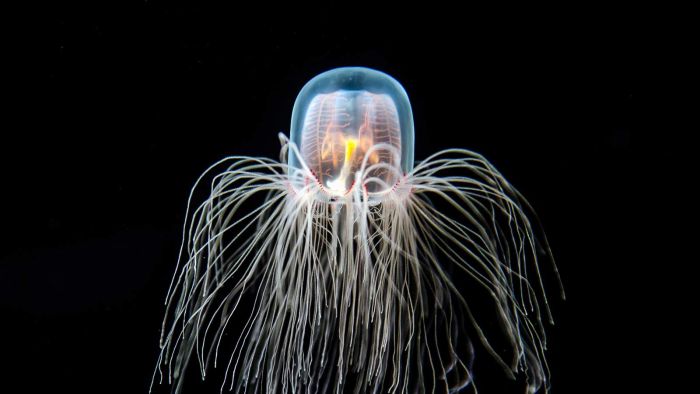
A bell-shaped Jellyfish, barely visible with a bright red larger stomach, is an animal that will astonish with the facts about their eternal life. The unique mechanism which makes them immortal is known as trans-differentiation.
A Turritopsis Dohrnii's lifespan can be described as biologically immortal because of their ability to return to the juvenile polyp state with the assistance of certain cells under particular conditions when there’s an unexpected change in temperature, decreasing salinity, or conditions of starvation. They pull in their tentacles, their bodies contract, and they start the cycle all over again as they sink to the bottom of the ocean. And this can be done over and over again. This unique ability is possible only once they reach the adult stage. Having said this, unlike other creatures, these can also be attacked by predators. The Turritopsis Dohrnii's life cycle begins with the female medusae carrying eggs, and when the eggs mature and become fertilised, they develop into planula larvae which further turn into polyp colonies.
2. Translucent Octopus
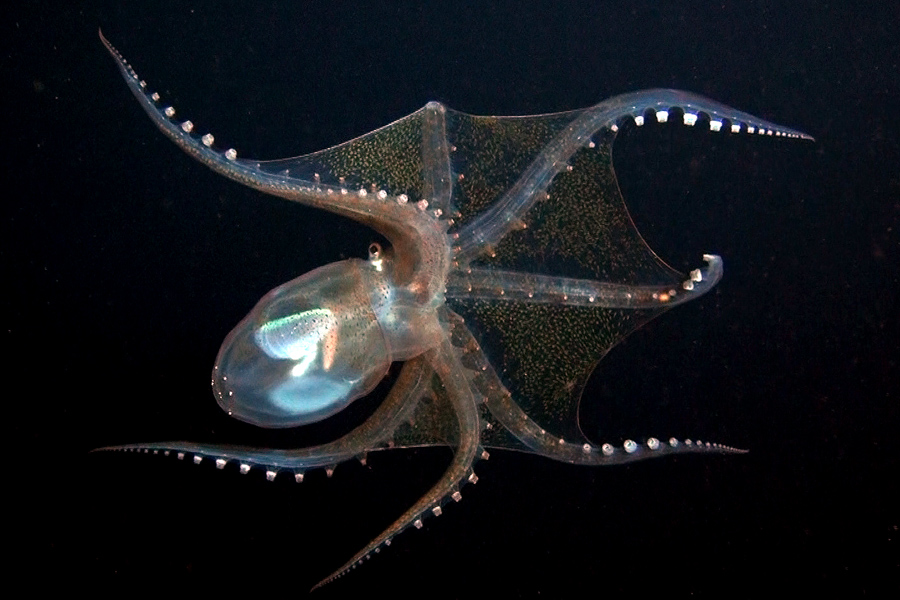
Usually found in open waters, this octopus has a translucent body, unlike the others who adopt camouflaging. This alternative approach is to protect themselves from predators and keeps them hardly visible when it’s away from its habitat. These animals have large round oddly elongated eyes usually pointed upwards to help widen their vision. They are transparent, but their digestive organs and eyes are opaque. An interesting glass Octopus fact is that the female carries hundreds of eggs until they hatch!
3. Tortoiseshell Beetle (Cassidinae)
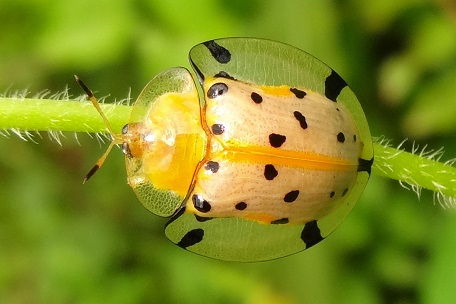
These look nothing different from a dewdrop. But it’s important to know that under this transparent shield, they have a pattern of grooves in multiple layers comprising fluids. The displacement of the fluid in these grooves in the upper section of the layers revealing a less reflective reddish bottom layer. These may be harmful to garden plants as they chew large holes in them. They enjoy eating raspberry and sweet potatoes!
4. Venus’ Water Basket

This is a weird-looking creature found on our planet — in the deepest parts of the ocean. This sea sponge looks like an artistic sculpture made of glass. This is because their skeleton is made out of small, spiky structures of silica, which is the principal component of glass and is usually tubular, cylindrical-shaped like a basket. Venus water basket characteristics can be observed as moderate-sized and may appear as extremely fragile, but they are firm and can sustain in harsh environments. Their strength comes from the spicules, which have a thickness of a human hair. Venus water basket diet comprises debris and microscopic organisms through the many holes present in its body.
Venus water basket adaptations can be justified by the six levels of organisation in their silica skeleton and make each spicule comprising silica elements around a protein filament located centrally as tough as possible and prevent them from twisting or crushing. Venus flower basket fun facts include that this is at times used as a wedding gift, symbolising cooperation coming from the fact that the Venus Flower Basket contains a pair of crustaceans who spend their life together inside the sponge!
5. Pharaoh Ants
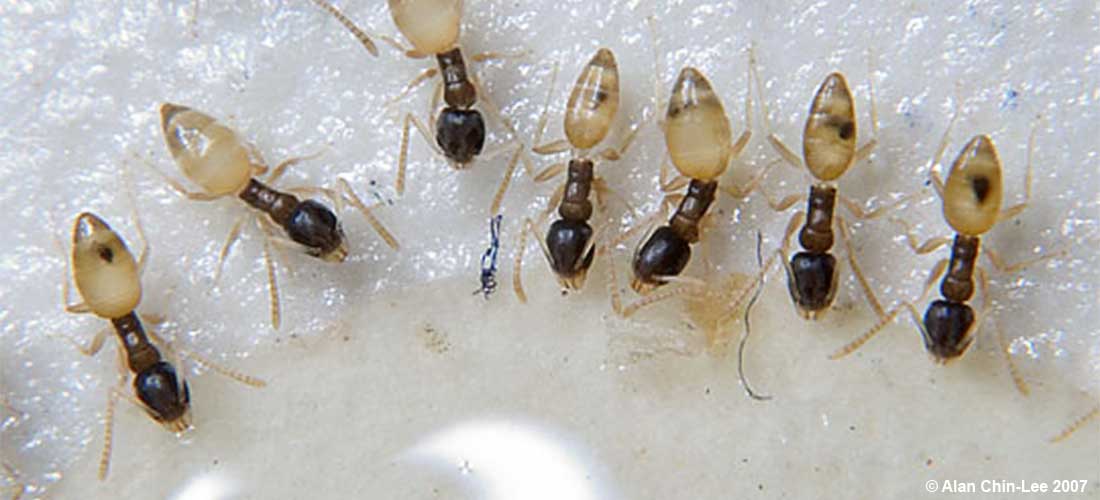
Pharaoh ants are found almost everywhere in the world and are known to be a tropical species. They are usually yellow or dark brown. A very common question related to Pharaoh ants is where do pharaoh ants live? These ants are usually found in hospitals, grocery stores, and hotels!
These ants use a unique trail system that comprises a few trunk routes. This system remains consistent from day-to-day, and the trunks are used while searching for food. Many branch routes are formed by the division of these trunks, depending on the food availability. Pharaoh ants use certain strategies that are evolutionary adaptive such as satiation and alternation for food preference. Satiation involves developing a strong preference for a particular food type for some time, and when offered in abundance regularly they eventually become satiated and develop a distinct preference for a different food type. The latter behaviour type is known as an 'alteration'. There’s usually an altering preference observed in carbohydrate-rich foods and protein-rich foods.
6. Glass Frog
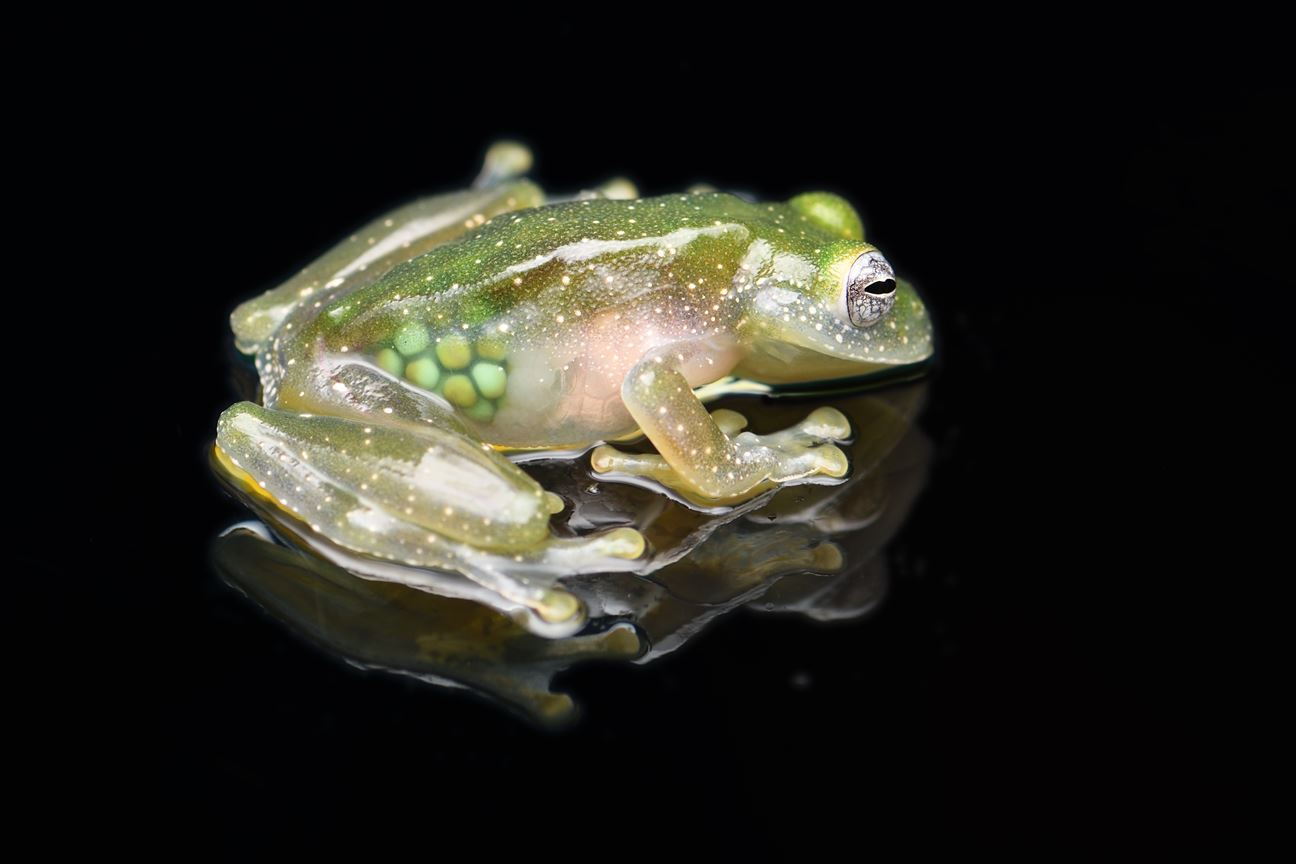
Another astonishing animal is the Glass Frog. There are some really interesting facts about glass frog adaptations.
Usually found in the tropical lowland forests and mid-elevation mountain forests, glass frog has over 120 species in various genera. Not all species have the underside as transparent. In fact, most glass frogs are light green. The green can also have shades of yellow and white and can also include a pattern with dots. One can see the heart pumping blood and the intestinal tract as well. This transparency can be classified as a type of camouflage in which the animal can adapt to the relative intensity of the brightness or darkness in his environment. This form of blending is known as Edge Diffusion.
One unique differentiating factor of a glass frog from that of a tree frog is that the former have their eyes faced forward and the latter have their eyes facing the sides.
7. Barreleye Fish
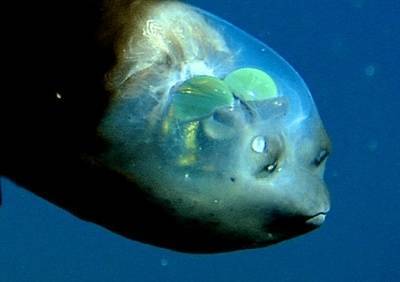
Found in the three major oceans of the world, a Barreleye fish is a translucent fish that has googly, tubular eyes usually pointing upwards while they’re looking for food and provide a binocular vision. Barreleye fish facts provided are interesting fish adaptation information.
This fish type was discovered by a marine biologist named Chapman; but unfortunately, the transparent head wasn’t able to be captured and eventually was effectively captured in 2004. The shape of the head is dome-like and transparent. The dome comprises a clear fluid and the eyes are ultra-sensitive, containing green fluid. This green fluid helps these fish to look for tiny bits of light available at the depths they live (2,000 feet - 3,330 feet) and assists in differentiating ambient light and the bioluminescent light. The Barreleye fish has large flat fins that assist them in being motionless in deep waters and help in looking for food.
8. Ghost Shrimp/ Glass Shrimp

Ghost shrimps, also known as glass shrimps, are commonly found in aquariums of all levels of fish keepers because they are known to be efficient aquarium cleaners and aren't very expensive. Their appearance and scavenging nature make them a good fit for one’s freshwater aquarium collection. They aren’t very difficult to take care of and have a peaceful temperament. They help in keeping the aquarium clean by keeping the algae levels low, hence contributing to the biological aspects of the tank. For an additional source of food, ghost shrimps will use debris from plants. Ghost shrimps are mostly transparent to protect themselves from the predators and have two pairs of antenna that help them sense toxins or chemicals in the water.
They have a short lifespan and might shed their old shell if they become too large for their existing shell. While the new shell develops and hardens the shrimp might not seem very active and would usually be more vulnerable. Ghost shrimp care is a simple task as they feed on the algae, debris, and leftover food. An add on for forming a harder shell is calcium supplements. However, copper is hazardous and should not be fed to them. Ghost shrimp eggs are carried by the females and can be spotted under the tail as tiny green dots.
9. Transparent Snail (Zospeum Tholussum Snail)
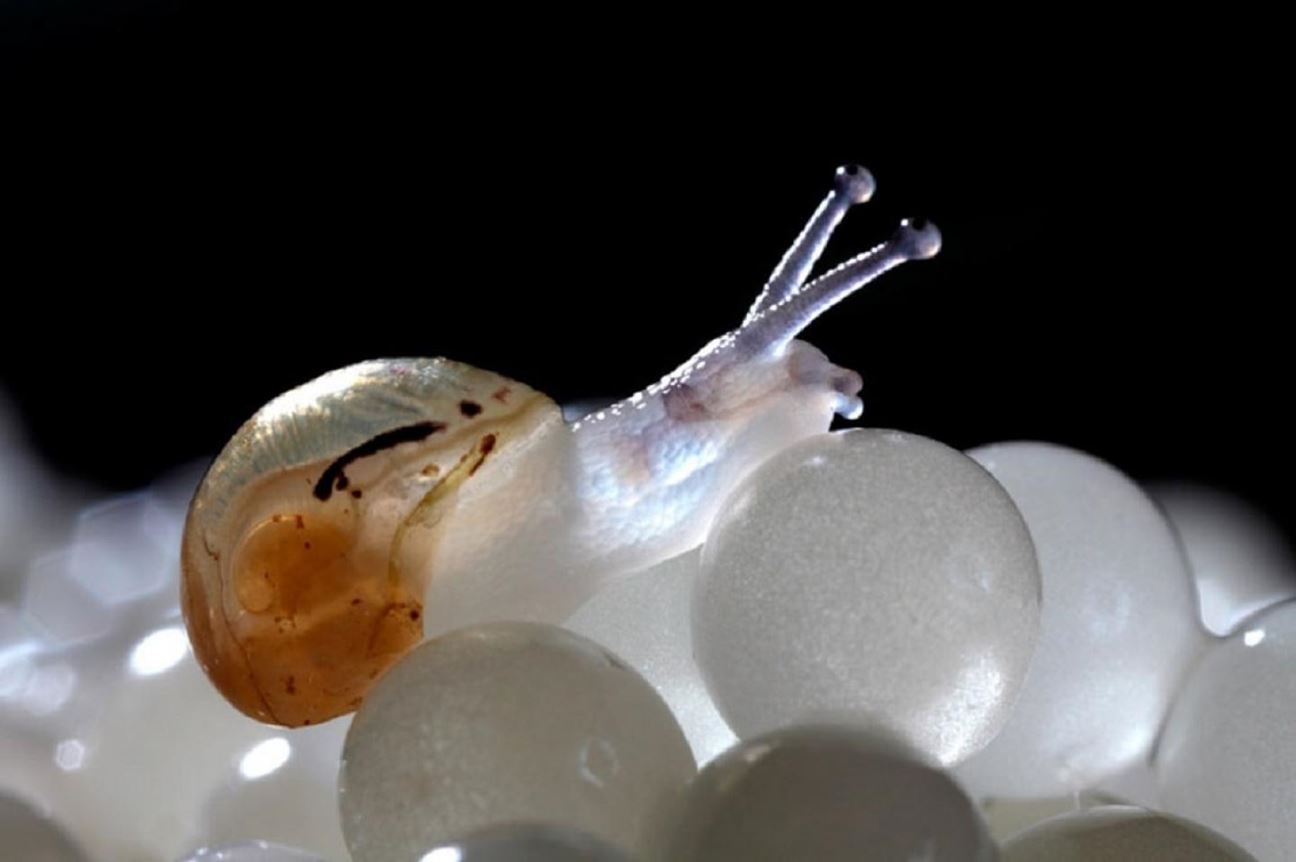
Also known as Zospeum Tholussum, the Transparent Snail is a beautiful but fragile miniature snail with a shell shaped like a dome. They’re usually found in muddy habitats and disperse through the flow of water or larger mammals. They’re extremely slow-moving and cover only a few millimetres in a week.
10. Crocodile Icefish
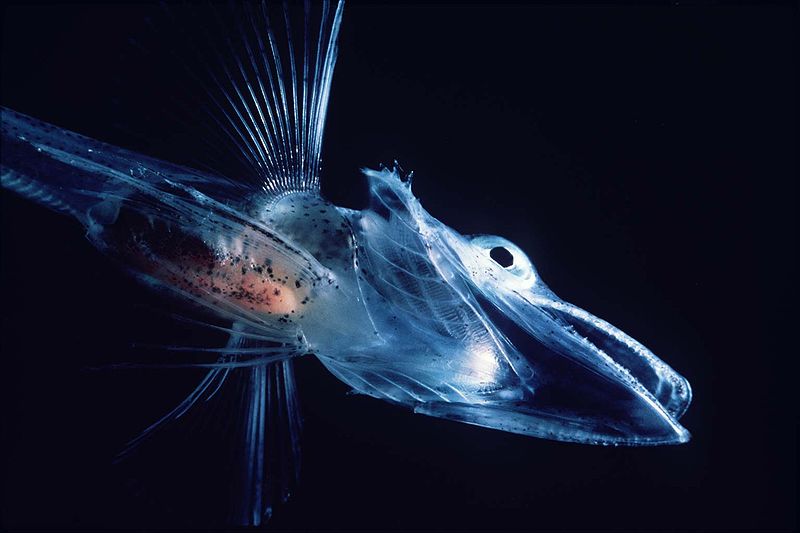
Icefish is also referred to as crocodile icefish or white blooded fish because of the shape of the snout and the lack of haemoglobin. These fish survive extreme temperatures from -2 to 4 degrees celsius and require this temperature to survive. They absorb the oxygen through their skin and feed on krill, crustaceans, small fish, and crabs. These fish have developed mechanisms that help them compensate for the lack of red blood cells with large hearts!
With this, I hope you enjoyed the little enlightenment about the evolution of these bodies that is nothing less but magical!